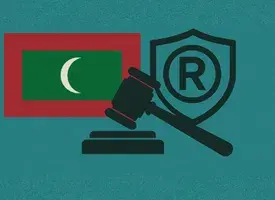FAQs on environment law in India
FAQs on Environment protection and historical background in India
environment-faq
Meaning of Environment
Section 2(a) of the Environment Protection Act, 1986 defines the term ‘environment’ as follows:
“Environment” includes water, air and land and the relationship which exists amongst and between water, air and land, and human beings, other living creatures, plants, micro-organism and property.
The term environment is connoted to mean the surroundings of a person and the things that combine together to create such surroundings. The surroundings include living and non-living things. Plants, animals, land, water and air are all part of the environment which forms part of the natural environment. Besides the natural environment, a man-made environment also exists which deals with technology, work, aesthetics, transportation, housing, urbanization, etc which together with the natural environment are essential for the growth of an individual, mentally, physically and spiritually.
An individual’s interactions with his environment help in their growth and development but this environment like the individual, is susceptible to danger and damage. Human activities over the ages have created a situation where people are using resources at a rate faster than they can be replenished and such activities have created an imbalance in the natural cycle. Human activities have polluted our air, water and land to a large extent. Such misuse causes harm not only to the environment but also to the individuals who form part of the society. Every human being should have access to clean air, safe drinking water and a healthy environment. The need to protect, conserve and improve our air, water and land is seen in the rising sea levels, the cycles of droughts and floods within the same season.
The concept of sustainable development which is a road-map, an action plan so that the resources that are available can be used in a judicious manner is a widely accepted method for protecting every person’s ‘right to development’ and balancing our society’s ‘right to development’ with their ‘right to good environment’.
The Brundtland Report of 1987 was the first document to comprehensively define the term ‘sustainable development’. It is defined as follows:
“Sustainable development is development that meets the needs of the present without compromising the ability of future generations to meet their own needs”.
There are three chief pillars of sustainable development which are economic growth, environmental protection, and social equality respectively. While each of these three ideas contribute equally to the overall idea of sustainability, it is difficult to find proof of equivalent levels of measures for each of the three pillars in policies of the world’s States. With the majority of countries putting economic growth on the forefront of sustainable development, it can be seen that the other two pillars have suffered, especially with the overall well-being of the planet’s environment in a dangerously poor state. The Brundtland Commission had put forth a conceptual framework that many nations agreed with and wanted to try and implement to create a difference within their boundaries, but it has been tricky to change these concepts about sustainability into concrete and decisive steps.
For more information on meaning of Environmental Laws in India please write to us at info@ssrana.com or submit a query.
To know more about Environmental Laws in India, click on the link below:
Till around fifty years ago, the idea that every human should have a right to a healthy environment was considered to be a novel, even radical idea. But since then it has been recognized as a basic human right by the international community and measures have been taken to enforce this right. The Universal Declaration of Human Rights (1948), the International Covenant on Civil and Political Rights (1966) or the International Covenant on Economic, Social, and Cultural Rights (1966) are all revolutionary human rights documents but none of them have mentioned the right to on environment. Society’s awareness of the impact, speed, and adverse results of environmental degradation was not sufficiently advanced nor researched upon during the era when these agreements were drafted.
The right to a healthy environment was first recognized by the Stockholm Declaration, which emerged from the United Nations Conference on the Human Environment (UNCHE) that was held in 1972. In the four decades since the Stockholm Declaration, the acceptance of the right to a healthy environment rapidly spread around the globe. The Brundtland Report, the 1992 United Nations Conference on Environment and Development held in Rio de Janeiro, which resulted in the Rio Declaration, Agenda 21, Convention on Biological Diversity, the 2002 Earth Summit in Johannesburg, the United Nations Conference on Sustainable Development in Rio in 2012 are all examples of international conferences and agreements that have taken place. As of 2012, 177 of the world’s 193 UN member nations, including India, have recognized the right to a healthy environment either through amending their constitution, or making and implementing environmental laws, court decisions, or by ratifying an international agreement.
Environmental Governance: Historical Background India
The Indian Constitution when it was first drafted did not make any direct or specific provisions for the environment. This did not mean that the Court did not take measures to protect the environment. The 42nd Amendment that was made in 1976 amended the Constitution to include environmental rights for the public and inserted Articles 48A and 51A(g) which imposed a duty on both the State and individuals to protect environment. In M.K. Janardhanam v. District Collector, Tiruvallur[1], the Madras High Court has observed that the phrase ‘protect and improve’, used in Articles 48A and 51A mean that the State and the citizens have a duty not only to preserve the environment in its current form but also to improve its quality so that people can live a healthy life.
India was one of the participants of the UNCHE and with a desire to protect and improve the environment several different legislations, regulations and rules were passed for fulfilling this objective. The Indian Government, through the Ministry of Environment and Forests (MoEF) enacted comprehensive laws to protect the nation’s environment. One of the major environmental enactments came just two years after the Stockholm Conference of 1972. That was the Water (Prevention and Control of Pollution) Act, 1974. Several other environmental laws have been passed by the Indian Parliament and are in force today.
[1] 2003 1 LW 262
For more information on Environmental Governance in India please write to us at info@ssrana.com or submit a query.
To know more about Environmental Laws in India, click on the link below:
India is a vast and extremely biologically diverse State and the Indian government has always had the desire to protect and preserve the environment. For that purpose, not only does the Constitution provide safeguards, but the desire to protect the environment can be seen in the numerous legislations that have been implemented by the Parliament. Besides the laws implemented by the Parliament, several judgments passed by the Court have also become part of the environmental jurisprudence as various principles of environmental law have been adopted and developed.
Constitutional Safeguards
The 42nd Amendment to the Constitution brought about a change as Articles 48A and 51A were inserted into the Constitution which cast a duty on both the State as well as the citizens to protect and improve the environment. This meant that the State and citizens must work together to protect the environment and also make efforts to improve the current quality of the environment as every citizen should have the right to live a full life in a clean environment. Besides the Articles inserted by the 42ndAmendment one must also look at Articles 38 and 47 of the Indian Constitution which are under Directive Principles of State Policy herein after referred to as ’DPSP’ and deal with the State’s duty to promote the welfare of the people and improve the standard of living and health of the population.
Article 21 guarantees every person a fundamental right to life. In Francis Coralie Mullin v. The Administrator, Union Territory of Delhi[1], the Court observed that the right to live in an environment that is free from the danger of disease and infection is intrinsic to the right to life. The right to live in a healthy environment is an important characteristic of right to live with human dignity and a person should have more than mere animalistic existence.
The Supreme Court has also laid down in Vellore Citizens Welfare Forum v. Union of India[2] that the ‘Precautionary Principle’ and the ‘Polluter Pays Principle’ (PPP) are indispensable aspects of ‘Sustainable Development’. These concepts are part of Environment Law of the country.
The National Green Tribunal Act, 2010 enunciates these principles[3] and was passed to establish the NGT. Section 20 of the NGT Act provides that the tribunal while making any order, decision or award shall follow the principles of sustainable development, precautionary principle and polluters pay principle[4].
Statutory Safeguards
Besides the Constitution, several legislations have also been passed by the Indian Parliament that have been implemented and enforced at a national level. The Water Act, 1974 was passed for the purpose of prevention and control of water pollution and for maintaining and restoring the wholesomeness of water[5]. The Water Act can be seen as India’s first attempt to deal with an environmental issue through legislations.
After the Water Act, the Indian government remained extremely active and passed a series of environmental legislations like theForest (Conservation) Act, 1980, The Air Act, 1981, the Environment (Protection) Act, 1986, the Public Liability Insurance Act, 1991 the Biological Diversity Act, 2002 and the National Green Tribunal Act, 2010.
The Indian government also amended existing laws such as the Indian Forest Act, 1927 in 1984, the Factories Act, 1948 in 1987 and the Wildlife Protection Act, 1972 in 1991 to sharpen the environmental focus.
The Forest (Conservation) Act, 1980 was passed to ensure the protection of forests as well as to check the rate of deforestation. The Environment (Protection) Act, 1986 was passed by the Indian Government in the wake of the Bhopal Gas disaster. A need was to felt to provide a comprehensive environmental law as the previous enactments all dealt with specific aspects. There needed to be an umbrella legislation designed to provide a framework for the Central Government and the Act helped harmonize the activities of various central and state authorities that had been established under previous laws. The Act also delegated wide powers to the executive to frame necessary rules and regulations.
Besides the legislations, several notifications and rules have also been made, like the Biomedical Wastes (Management and Handling) Rules, 1998, Recycled Plastics (Manufacture and Usage) Rules, 1999, Environment (Silting for Industrial Projects) Rules, 1999, the Solid Wastes (Management) Rules, 2016, Plastic Waste Management Rules 2016, E-waste (Management) Rules, 2016 and the Hazardous Wastes (Management and Handling) Rules, 2016.
[1] 1981 2 SCR 516
[2] 1996 5 SCC 647
[3] http://moef.nic.in/downloads/public-information/NGT-fin.pdf, retrieved on 2015-09-26
[4] http://www.greentribunal.gov.in/Writereaddata/Downloads/NGT-fin.pdf, retrieved on 2015-09-26
[5] http://hspcb.gov.in/water%20act,%201974%20relevant%20provisions.pdf, retrieved on 2015-09-26
For more information on Statutory Framework of Environmental Laws in India please write to us at info@ssrana.com or submit a query.
To know more about Environmental Laws in India, click on the link below:
- Sustainable Development
Sustainable development simply means balanced development. When a country wants to develop itself, it must balance its right of development with its citizens’ right to environment. Sustainable development is the ability of the people to meet their requirements today without creating a situation where our descendants are unable to meet their own needs in future years. The current generation should not abuse and exploit the resources available to us in such a way that our future generations are unable to gain advantage from the same resources. The concept of sustainable development has become a well-established principle of environmental law and has been accepted as a valid action plan by an overwhelming majority of the World’s countries. The concept had been made part of Indian jurisprudence through the judgments made by the Supreme Court and since then has become a provision of the NGT Act under Section 20.
The concept of Sustainable development also includes within itself two other principles:
- The Precautionary Principle– the Precautionary Principle has been recognized as one of the most important principles of sustainable development has been mentioned under Principle 15 of the Rio Declaration of 1992 where it was stated that to protect the environment the States shall apply the precautionary approach and that the lack of full scientific certainty shall not be the only ground for not taking measures to prevent environmental degradation. The Precautionary Principle is therefore based on the idea that “it is better to be safe, than sorr”. The Convention on Biological Diversity, 1992 and the Cartagena Protocol on Bio-safety, 2000 are examples of multinational agreements where the precautionary principle has been used.
In Vellore Citizens Welfare Forum v. Union of India1, the Supreme Court using the support of various articles of the Indian Constitution, the Brundtland Report, India’s obligations under Article 512, and legislative enactments such as The Water Act, 1974, The Air Act, 1981, and the Environment (Protection) Act, 1986 stated that Sustainable Development, of which the Precautionary Principle and Polluters Pay Principle are a part, is a customary international law and hence a part of domestic law. In M.C. Mehta v. Union of India3 (the Taj Trapezium case), the Court was attempting to protect the Taj Mahal from being polluted from nearby industries. The Court observed that the burden of proof is on the industries that must prove that their emissions are of a benign nature and environmental measures should be of such character that they are able to anticipate, prevent and attack environmental degradation. The lack of concrete proof should not be the only ground for delaying action as there may be irreparable harm caused to the environment if such a delay occurs;
- The Polluters Pay Principle- The slogan “If you make a mess, it’s your duty to clean up” is extremely appropriate for the PPP. In the earlier times pollution was not a concern. The release of gases or waste into the air and water was considered totally legal. Water and air were used as “sinks” and it was thought that neither air nor water was a limited resource and therefore, their use was free to all. However, when the side effects of pollution were felt the apprehension for injury to the environment, human health, and property began. Pollution became a widespread anxiety and scientists were in the vanguard of those who were looking for solutions. The first real allusion to PPP was in the OECD Guiding Principles Concerning International Economic Aspects of Environmental Policies recommendation of 26th May 1972.
The PPP was then recognized as the most important principle of sustainable development and has been mentioned under Principle 16 of the Rio Declaration of 1992. Principle 16 states that the polluter should bear the cost of pollution. An important point to be noted is that under the PPP no mention has been made of fault. If a person pollutes the environment they must pay compensation for the damage caused and must pay to return the environment to its original state irrespective of the fact that the damage was caused intentionally or not.
- Public Trust Doctrine
The Public Trust Doctrine was made part of Indian environmental jurisprudence by the Court in the case of M.C. Mehta v. Kamal Nath and Ors. The Supreme Court observed that the Public Trust Doctrine chiefly rests on the belief that certain resources like air, sea, water and forests have such great significance to the people as a whole that it would be unfair to allow them to fall into private ownership. The State is the trustee of all natural resources and must look after as they are meant for public utilization and pleasure. The public at large can enjoy the seashore, rivers, air, forests, etc and they cannot be transferred into private ownership. The court observed that since the India’s legal system was based on British common law, it could incorporate the public trust doctrine as part of its own jurisprudence. The Court also directed the developer to pay compensation to restitute the environment and ecology of the area. It also had no difficulty in holding that the Himachal Pradesh government had committed an obvious contravention of public trust by leasing out the ecologically sensitive area.
- Principle of Absolute Liability
The principle of Absolute Liability was developed by the by the Indian Supreme Court in the case of M.C. Mehta vs. Union of India. The Court observed the following:
“where an industrial unit is engaged in a hazardous or naturally unsafe activity and harm results to anyone on account of an accident in the operation of such hazardous or naturally unsafe activity resulting, for example, in escape of toxic gas the industrial unit is strictly and absolutely liable to compensate all those who are affected by the accident and such liability is not subject to any of the exceptions which operate vis-├á-vis the tortious principle of strict liability that had been evolved in Rylands v Fletcher4“.
The rule is an
absolute and non-delegable obligation towards the society to make sure that no
injury results to anyone on account of hazardous or naturally unsafe activity
which it has undertaken. The enterprise cannot defend itself by saying that it
had taken all reasonable care and that the harm occurred without any negligence
on its part. This principle is therefore also called no fault liability.
[1] Supra note 21
[2] India is obligated to comply with foreign instruments that they are a signatory of.
[3] AIR 2002 SC 3696
[4] (1868) L.R. 3 H.L. 330
For more information on meaning of Environmental Laws in India please write to us at Email: info@ssrana.com or submit a query.
To know more about Environmental Laws in India, click on the link below:








